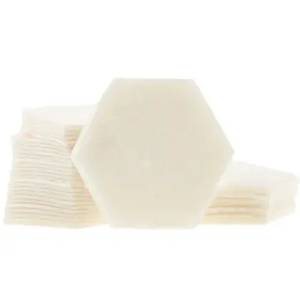

Quilt Batting
Soft and snuggly, quilt batting makes your projects warm and fluffy. When you're looking for just the right loft and color, you'll find it here. From polyester quilting batting to bamboo, wool, and traditional cotton quilting batting, we have your favorite brands like Quilter's Dream, the Warm Company, Pellon, Bosal, and much more. read more
Shop Quilt Batting by Brand
Quilt Batting
Get ready for some snuggles! What is batting in a quilt? It’s what makes a quilt feel cozy and soft. Quilt batting is the center layer of a quilt sandwich and it goes between the quilt top and the backing. When your quilt is finished, you won’t be able to see it, but you’ll be able to feel it!
When people ask, what is the best quilt batting to use in a quilt? We’re here to guide you through your batting options to help you choose the best batting for your quilt. First off, you’ll want to consider what type of batting is best for you. There are many different kinds of quilt batting out there (you can here to read more about quilt batting types here!), but here we’ll cover the three common quilting batting types:
Cotton quilt batting is one of the most popular kinds of batting for a reason. It’s economical, it’s easy to quilt, and it washes up well. Because it’s an all-natural fiber, cotton quilt batting has more weight per square inch than a synthetic fiber or a blended batting. When you quilt cotton batting, make sure your lines or quilting pattern is closer together than 10” so that your batting doesn’t bunch or shift. And when you’re all finished, cotton quilt batting will feel a bit stiff and needs to be washed and used to soften it up. Popular brands of this kind of batting include Warm and Natural batting, Quilter’s Dream batting, and Bosal Katahdin batting.
Cotton blend batting for quilting is usually a mix of 80% cotton and 20% polyester. This type of batting is becoming increasingly popular and it’s the kind of quilt batting we use here at Missouri Star in our machine quilting department. It’s truly the best of both worlds. Because it’s a cotton blend with mostly natural fibers, it allows your quilt to breathe and washes up beautifully. The addition of 20% polyester fibers gives the batting additional strength and allows the quilt to drape beautifully. It also reduces overall shrinkage. This type of batting also includes fusible batting, which makes pin basting unnecessary! Cotton blend brands include Missouri Star Quilter’s Best Blend, Quilter’s Dream Fusible, Mountain Mist, Acadia, and Warm 80/20.
Bamboo quilt batting is made from the fibers of bamboo plants, a highly sustainable resource that grows quickly without the need for pesticides or fertilizers. Bamboo batting is known for its breathability and softness. And since bamboo has natural antibacterial and antifungal properties, bamboo batting is a hypoallergenic choice for anyone with allergies or sensitive skin.
Finally, polyester batting is also a great option. Because it’s synthetic, it doesn’t irritate people with allergies and it’s very resilient even after frequent washing and heavy usage. It will last for years and is also resistant to mold and mildew. Polyester batting doesn’t shrink as much as other kinds and it’s available in many different lofts. We carry popular polyester quilt batting brands like Quilter’s Dream Puff, Poly-Fil Fiber, Quilter’s Dream Poly, & more.
Did you know that there are also different colors of quilt batting? Our friends over at Nancy’s Notions have some handy tips for choosing the right color of batting for your project - don’t miss it!
So how thick should quilt batting be, anyway? Well, that depends on what you prefer. The thickness of your quilt batting is referred to as loft. A 100% cotton or cotton poly blend quilt batting is generally going to be thinner, so it’s lower loft and when you quilt it, the stitches leave less of an impression in the batting for a smoother finish and a more flowing drape. A 100% polyester quilt batting is usually going to be thicker, so it’s a higher loft and when you quilt it, the stitches sink down into it, leaving a deep impression for plenty of pillowy texture. It just depends on the look you’re going for. As for quilt batting sizes, we carry a variety of sizes from crib to king.
Here are a couple more handy tips and tricks when it comes to quilt batting. Should you pre wash quilt batting? Nope! There’s no need. It will shrink along with your fabrics when you wash your finished quilt. And, some have asked, is it OK to piece quilt batting? Yes! In fact, Jenny does it all the time. Here’s how you do it: align extra pieces of batting together and connect them with fusible seam tape using your iron. You can also connect extra batting pieces together with a wide zigzag stitch on your sewing machine. We recommend using Bosal Batting Seam Tape, Steam A Seam 2, or Scrap Tape. Once your quilt is finished, nobody will know the difference.
Use the filters to shop quality quilt batting at Missouri Star!
Check Out Batting Basics on The Final Stitch ➤





